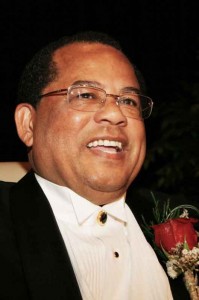
Hardy Brown Sr.
SAN BERNARDINO, CA – In recognition of his extraordinary contributions to the Inland Empire as a publisher and philanthropist, Hardy Brown will be recognized by the California State University and California State University, San Bernardino with an Honorary Doctorate of Humane Letters.
The ceremony will take place during the CSUSB College of Arts & Letters commencement on Saturday, June 14 at 11:45 a.m. in Coussoulis Arena.
“It is truly an honor to recognize Hardy Brown. He and his wife Cheryl are iconic members of our community, celebrating the contributions of our African American community through the Black Voice newspaper and their many community partnerships,” said CSUSB President Tomás D. Morales.
A true patriarch in the Inland Empire’s African American community, Hardy Brown Sr. co-founded Brown Publishing Company to produce a weekly community newspaper, Black Voice News, which focuses on local news in Riverside and San Bernardino counties.
The Browns, married for 50 years, have been recognized as the only living publishers to be included in the 175th anniversary of the Black Press of America. Their names were added to such historic publishers as Frederick Douglass, Ida B. Wells-Barnett and Carlotta Bass – all of whom overcame great obstacles to publish the truth and to give a voice to the disenfranchised. Black Voice News now reaches over 10,000 readers per edition.
In 2001, Mr. Brown co-founded California Black Media (CBM), a network of African American media owners across the state of California. CBM has served as a statewide initiative to better inform and educate the African American community about key issues that affect their lives. California Black Media consists of 22 African American newspapers across the state. Hardy Brown Sr. was awarded the Alice F. Page Award for nonviolence in 2009.
Passionate about community service and education, the Browns founded the Black Voice Foundation in 1988, with a mission to train and educate individuals in print media. Due to the digital revolution, the rapid growth of technology in the world of communications and media, and the need to impact lives through a diverse set of media platforms, the foundation has expanded its mission to include digital and electronic media and professional development.
The Black Voice Foundation now runs programs in order to fulfill their commitment to educate and preserve the African American legacy in the community. They include the Black Voice Internship Program and the Califest Studio Workshop. The latter combines education with the arts. Its first project, Buck World One, fuses spoken word, interactive video projections and dance in telling the story of urban youth living in some of the Inland Empire’s most depressed communities.
For 15 years, the Black Voice Foundation Footsteps to Freedom Study Tour has partnered with the San Bernardino County Superintendent of Schools, Riverside County Office of Education, and National Park Service to lead a unique study tour experience for Inland Empire educators and college students. For eight days each summer, tour participants learn first-hand about the incredible courage of the people who sought freedom or who helped others achieve it along the central and lesser-known route of the Underground Railroad from Kentucky to Canada. Some 500 area teachers and administrators have taken this summer course and helped excavate this unique African American tapestry.
In addition, the Black Voice News also initiated the “Building Better Communities” program, which works with local companies, organizations and agencies to improve neighborhoods.
Through its efforts with California Black Media, the Foundation is able to promote the merits of the Black Press across the state of California. The California Black Media project hosts annual issue forums that address concerns in African-American communities throughout the state.
 Westside Story Newspaper – Online The News of The Empire – Sharing the Quest for Excellence
Westside Story Newspaper – Online The News of The Empire – Sharing the Quest for Excellence







